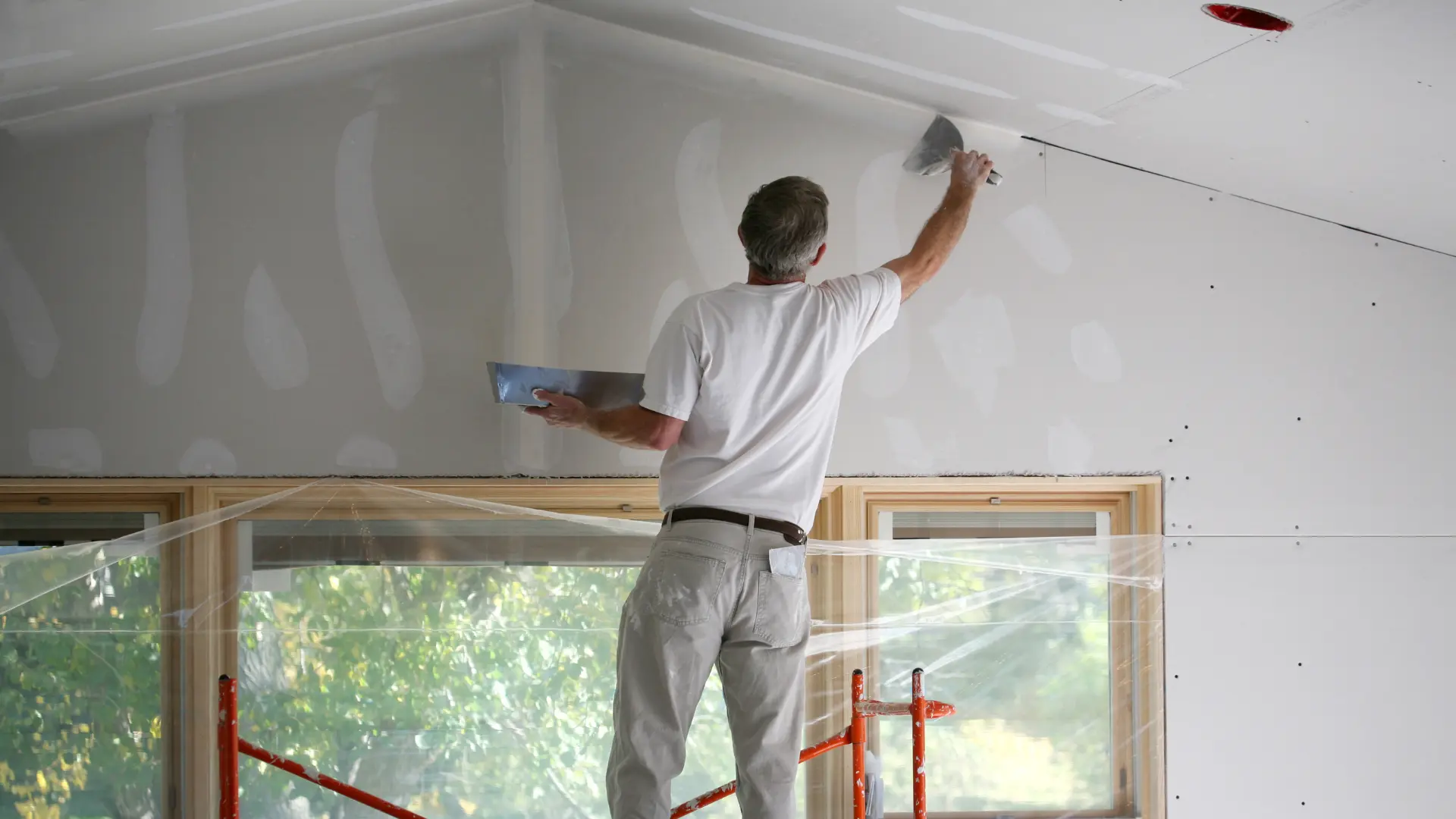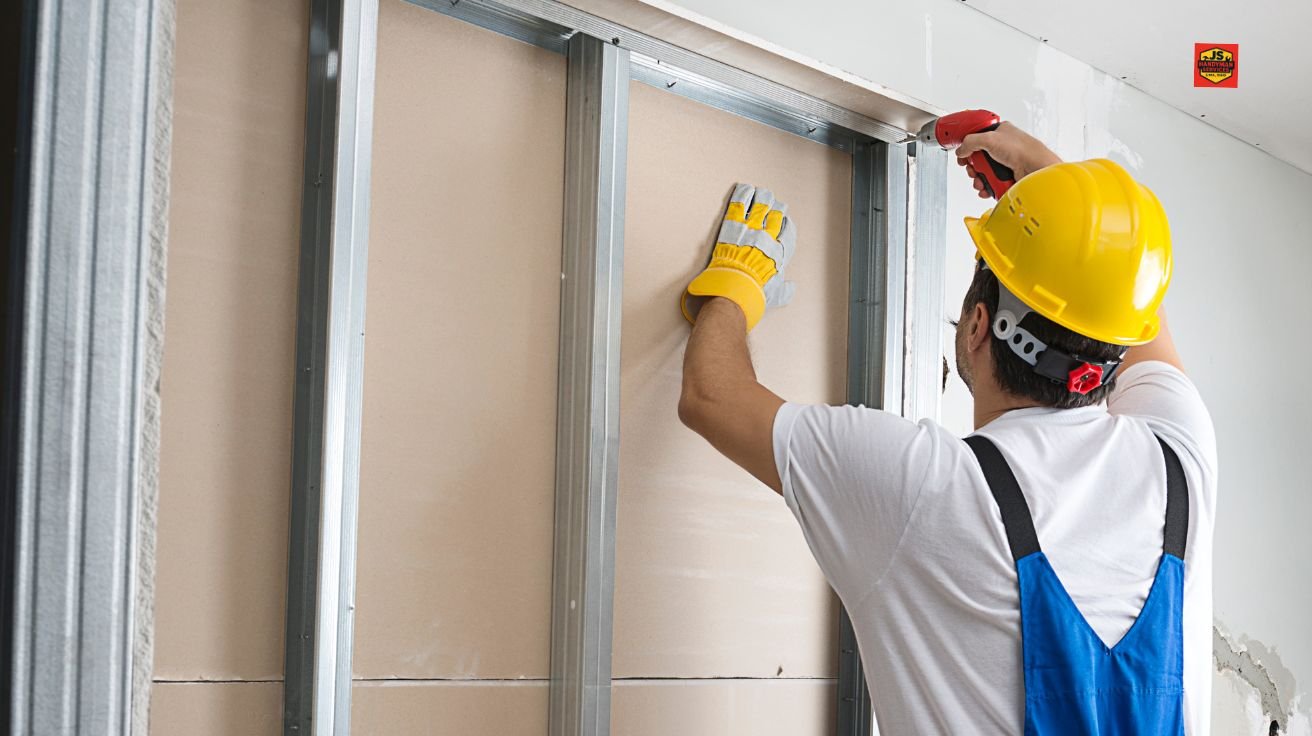Experience the difference of precision-based Drywall Repair Ogden UT with expert painting applications.
A Comprehensive Overview to Mastering Drywall Repair and Setup
This overview supplies a complete exploration of drywall repair service and installment, satisfying both beginners and skilled professionals. It details essential tools, strategies for patching and hanging sheets, and the important finishing procedures. Drywall Installation Ogden Utah. By understanding common mistakes, people can accomplish sleek outcomes. Mastering these skills not only improves one's home but also builds confidence in DIY undertakings. What foundational ideas will ensure a successful task throughout?
Vital Devices for Drywall Repair Service and Setup
When beginning on drywall repair service and setup, a couple of important tools can substantially boost the performance and top quality of the job. A drywall blade, generally available in various dimensions, is vital for applying joint compound and smoothing joints. A taping knife is also necessary for feathering sides and making sure a smooth surface. Furthermore, a drywall saw or utility knife enables precise cutting of drywall sheets to fit any area.

Step-by-Step Overview to Patching Holes
Patching holes in drywall is a straightforward procedure that can bring back the wall's look and integrity. To begin, the area around the hole need to be cleaned and any loose debris eliminated. For little holes, a simple spackle or joint substance can be applied with a putty knife. Larger holes may call for a patch; an item of drywall can be cut to fit the hole, secured with adhesive or screws, and then taped around the edges. Once the patch remains in area, joint compound is used over the patch and feathery out to mix with the bordering wall. After the compound dries out, fining sand is needed to achieve a smooth coating. Finally, the repaired location can be keyed and repainted to match the remainder of the wall surface. This technique assures a seamless repair work, boosting the total appearance of the drywall and keeping its architectural integrity.
Methods for Hanging Drywall Sheets
After efficiently repairing holes in drywall, the next action involves hanging brand-new drywall sheets to produce a seamless surface area. To attain this, one must start by determining the wall surface area accurately and reducing the drywall sheets to fit. It is important to hang the sheets flat for better structural stability, beginning with the top and functioning downwards.
Using a drywall lift can streamline the process, specifically for ceiling installations. As soon as positioned, protecting the sheets with drywall screws at intervals of about 12 inches along the edges and 16 inches in the field is vital. This ensures a strong hold and minimizes the risk of sagging. For edges, the sheets need to be cut to fit well, enabling cleaner seams. Ultimately, it is advisable to startle the joints between sheets to reinforce the total framework, creating a more resilient surface all set for the next phase in the drywall setup procedure.
Ending Up Touches: Insulation and Mudding
Finishing the drywall setup entails the vital steps of mudding and taping, which assure a refined and smooth coating. Insulation calls for the application of joint tape over the joints in between drywall sheets. drywall contractors. This tape can be either paper or fiberglass fit together, with each kind offering distinct benefits. After taping, the following step is mudding, where joint substance, or "mud," is applied to cover the tape and fill any imperfections
Utilizing a drywall knife, the substance should be spread out uniformly, making sure a feathery edge to decrease noticeable modifications. Numerous coats are typically necessary, with fining sand in between each layer to attain a smooth surface. Cautious attention throughout this process is crucial, as it greatly affects the final appearance of the wall surface. With the best strategy and persistence, the end outcome will certainly be a perfect foundation all set for paint or ending up touches.
Typical Blunders to Avoid in Drywall Projects

Another usual mistake is not enabling adequate drying out time in between coats, which can trap dampness and jeopardize the finish. In addition, disregarding to feather the edges appropriately can develop noticeable lines and flaws. Missing sanding or using improper methods may leave rough spots. By being mindful of these risks, individuals can significantly improve the quality of their drywall projects and accomplish a professional-looking coating.
Often Asked Questions
Can I Fix Drywall Without Expert Help?
Yes, one can repair drywall without expert assistance. With the right tools, materials, and advice, people can efficiently handle minor repair work. However, substantial damages might call for expert knowledge for ideal outcomes and toughness.
How Much Time Does Drywall Substance Require To Dry?
Drywall substance usually takes in between 24 to two days to dry completely, depending upon variables such as humidity and temperature level. Thinner layers may dry quicker, while thicker applications call for more time for suitable results.
What's the very best Type of Paint for Drywall?
The most effective type of paint for drywall is commonly a water-based latex paint. It gives exceptional protection, longevity, and ease of application, making it ideal for interior walls while permitting simple cleaning with soap and water.

Exactly how Do I Prevent Mold on Drywall?
To avoid mold on drywall, guarantee proper air flow, control humidity levels, use mold-resistant materials, and quickly attend to any kind of leakages. Regular assessments and instant remediation of water damage are also crucial for long-lasting avoidance.
Is Drywall Recyclable After Removal?
Drywall is recyclable after elimination, supplied it is complimentary from pollutants like mold, paint, or various other hazardous products. Recycling centers can process it right into brand-new products, promoting sustainability and reducing garbage dump waste in building.
When starting website on drywall fixing and installment, a couple of essential devices can significantly boost the effectiveness and top quality of the work. After efficiently repairing openings in drywall, the following step involves hanging brand-new drywall sheets to produce a smooth surface. Finishing the drywall installation involves the essential actions of mudding and taping, which ensure a refined and smooth coating. Attaining a sleek surface in drywall tasks can be tough, and numerous typical mistakes can threaten the quality of the job. Yes, one can repair drywall without expert aid.